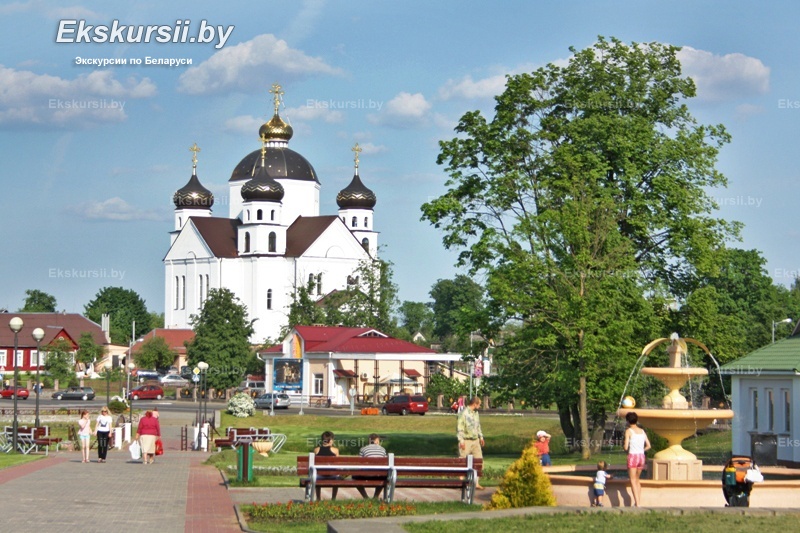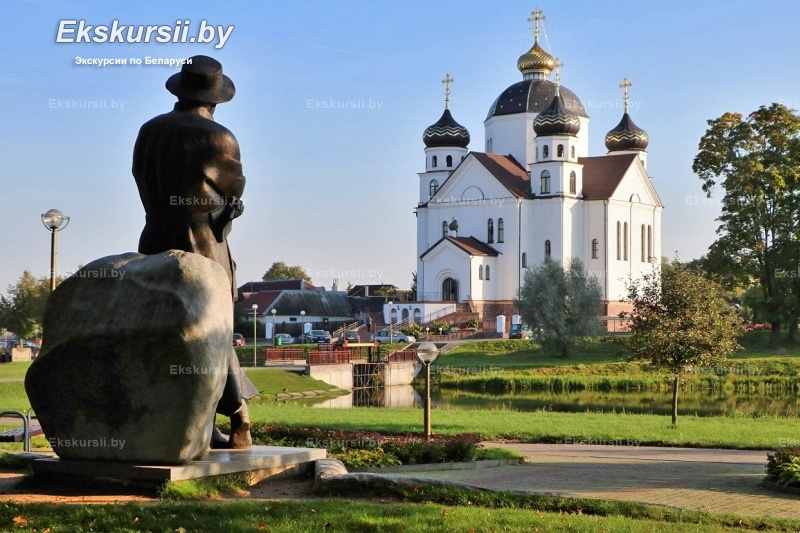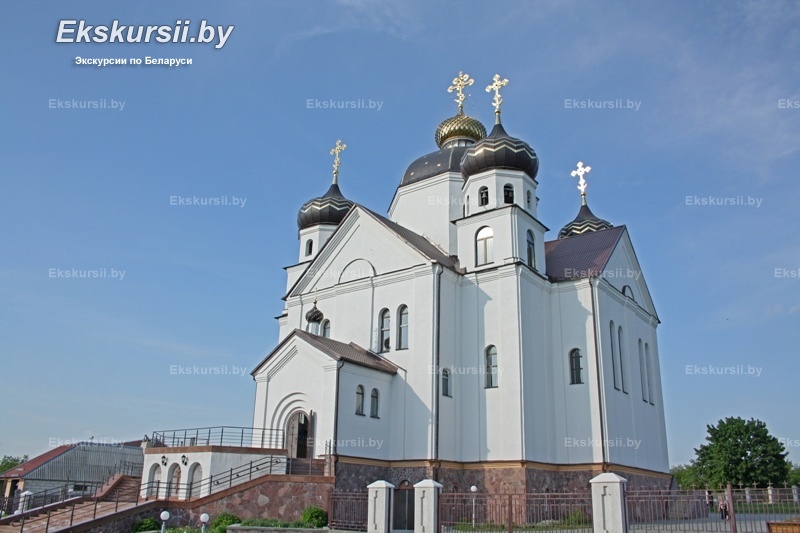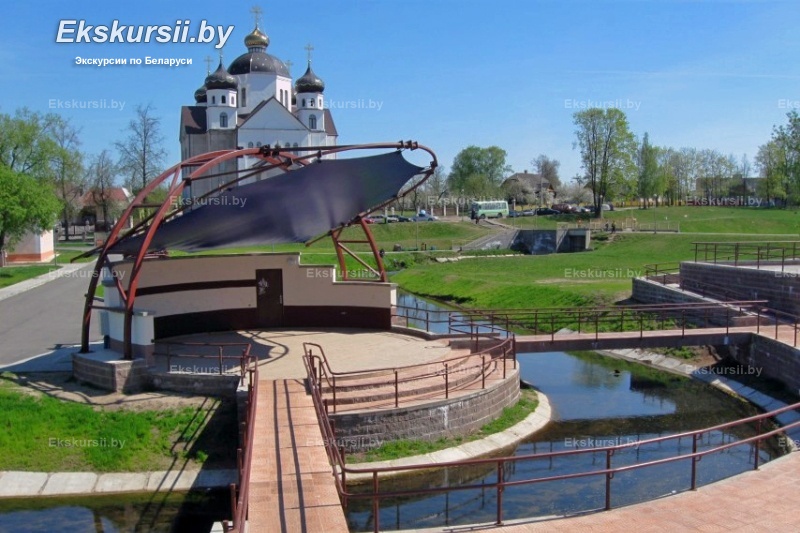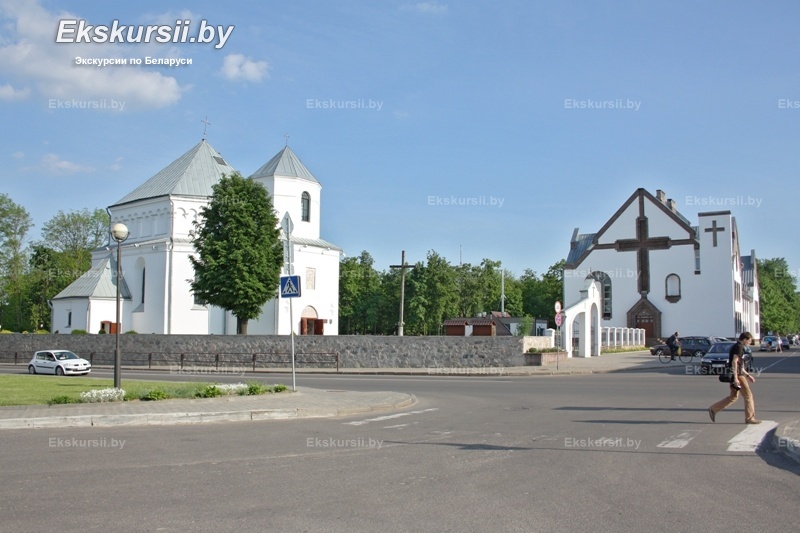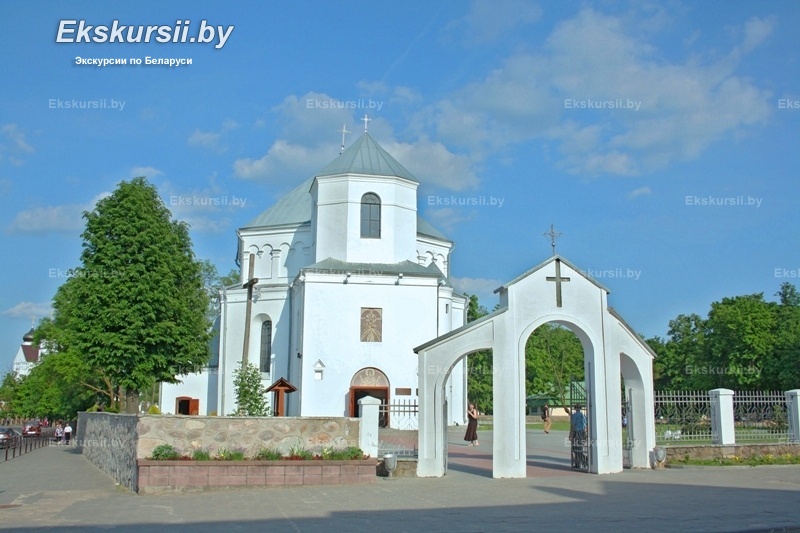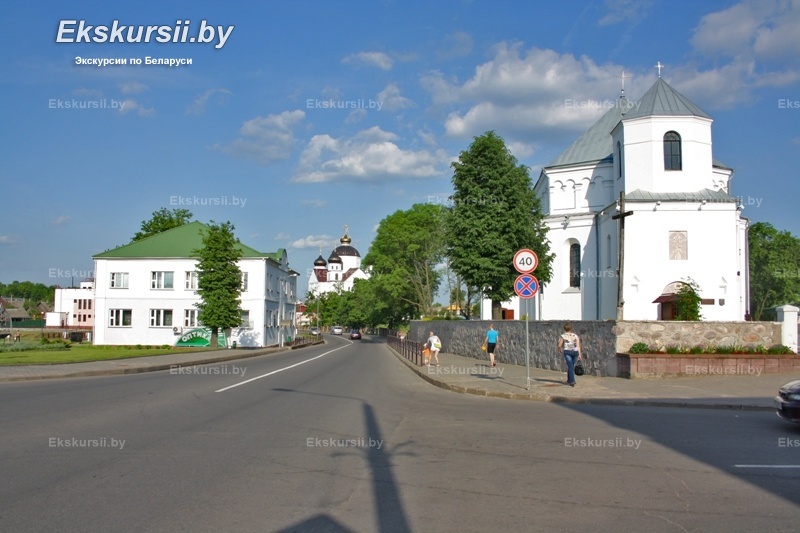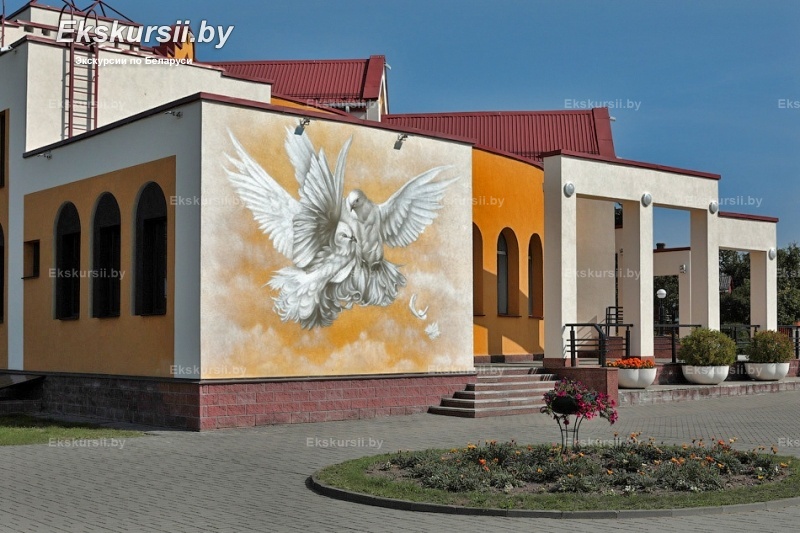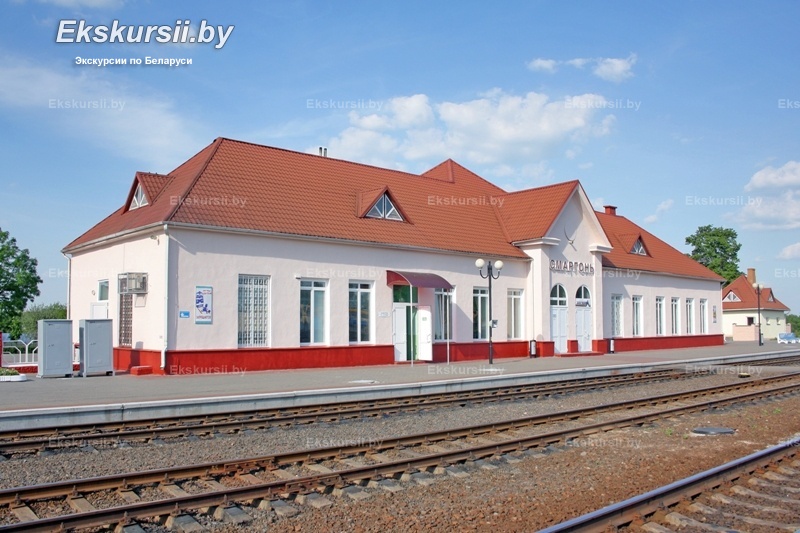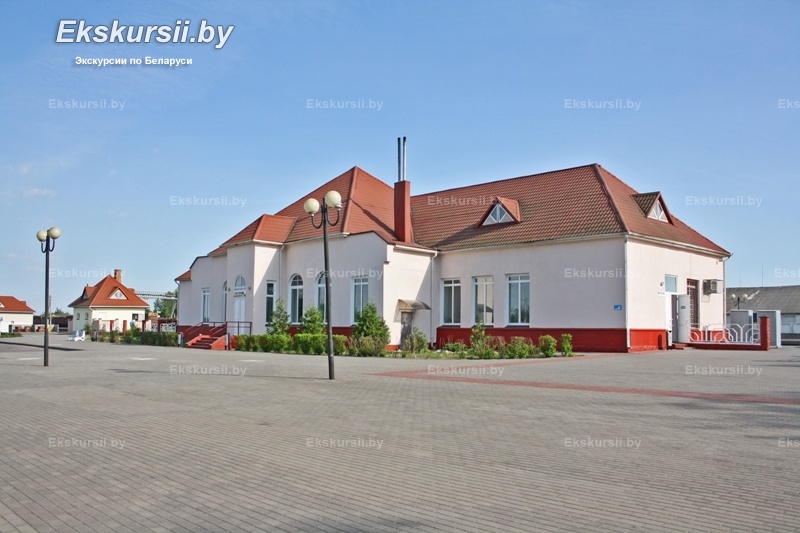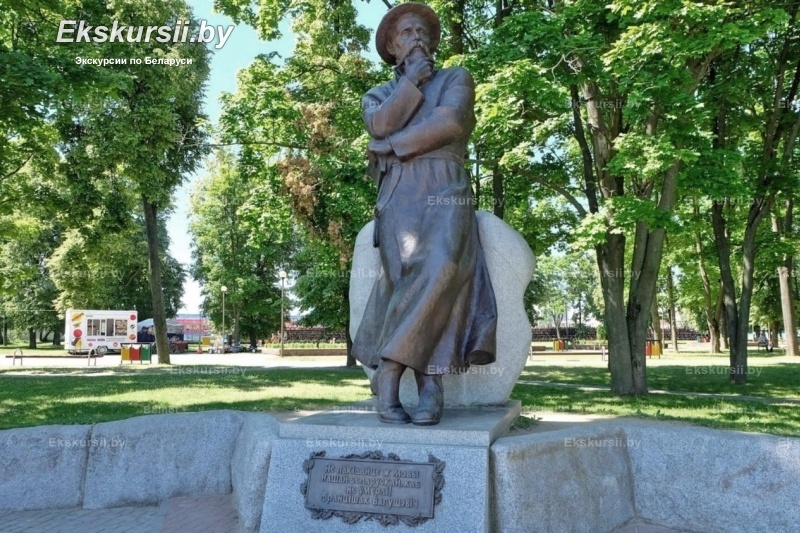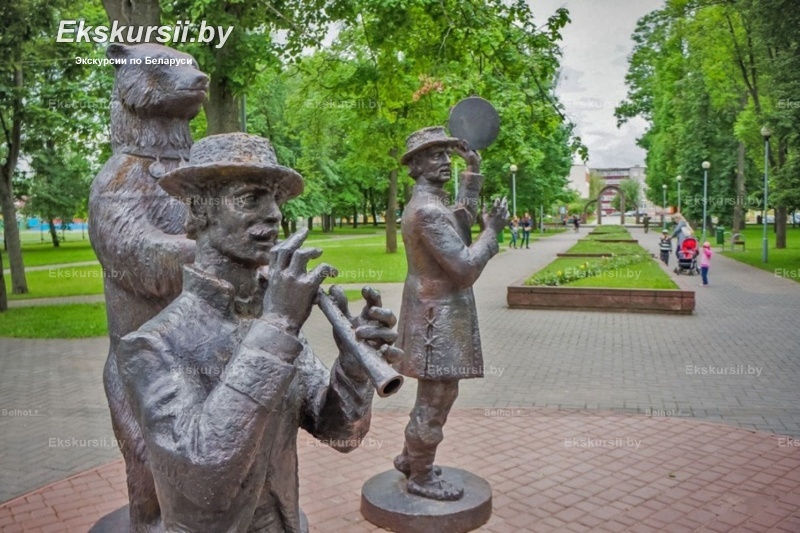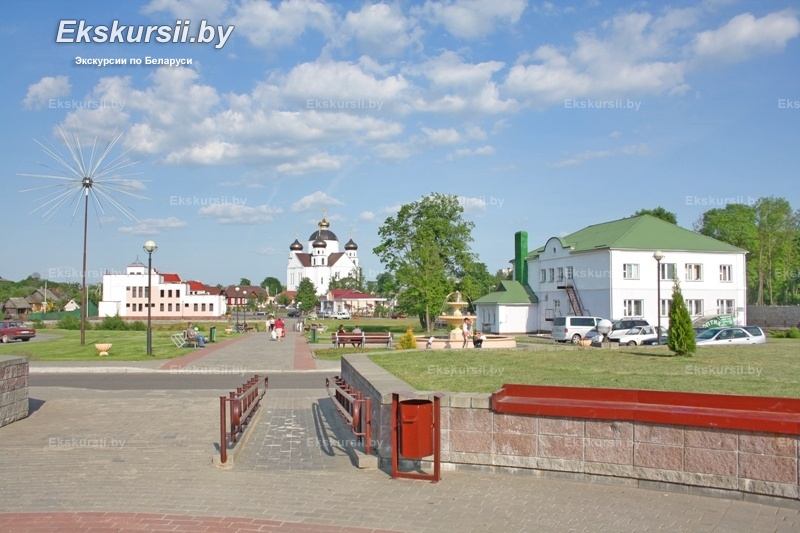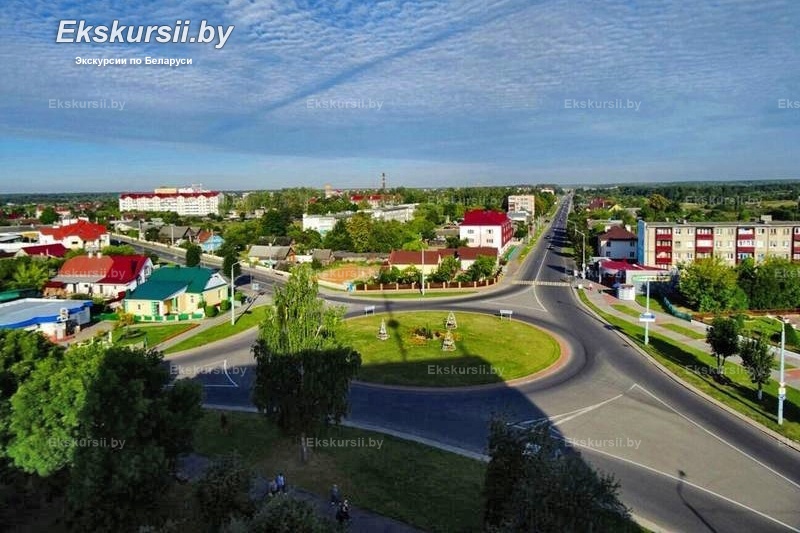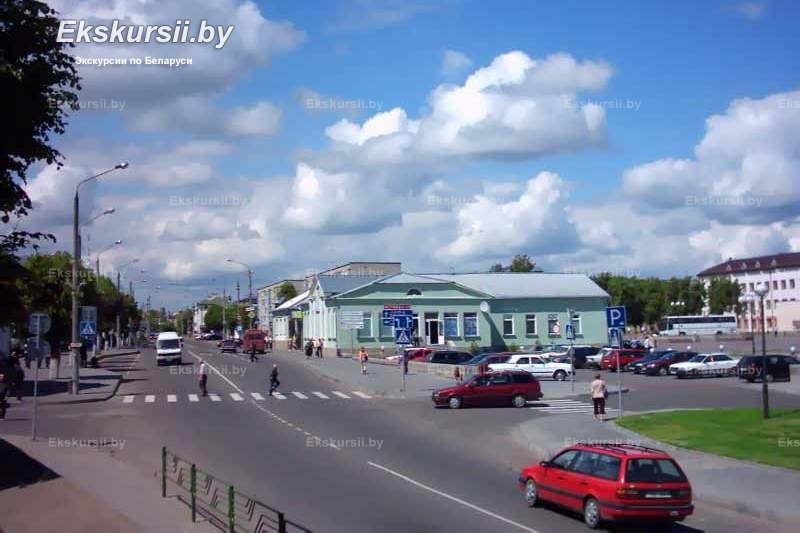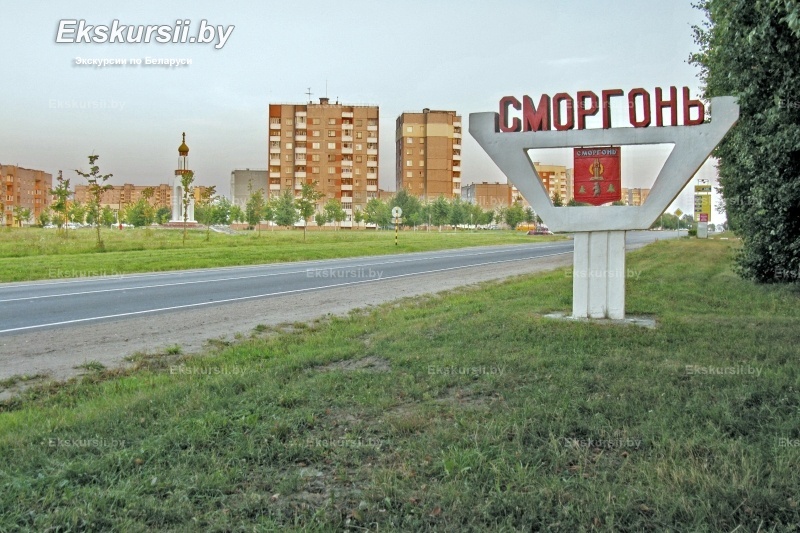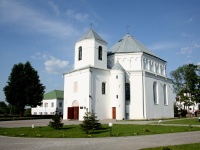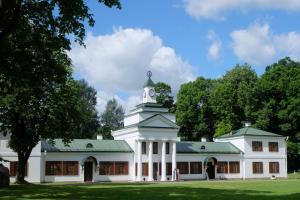History of the development
As the town of Smorgon, it was first mentioned in 1503. Throughout its five-century history, Smorgon belonged to Zenovich, Radziwills, Pshezdetsky. In 1503 a wooden church of Saints Michael and Alexei was built here, but already in 1552 a stone Calvinist chapel was built on the site of the church. In 1590, a paper manufactory, a school and a hospital began to work in the town. On sheets of the Smorgon paper mill, a watermark in the form of the coat of arms of the Zenovich family - «Despot» was placed. Under Zenovichi, Smorgon was a small place near their residence. In 1622, there were 109 yards in the town, 4 taverns, paper, milling and sawmill water mills were working.
As a result of the wedding of Anna Sofia Zenovich with Albrecht Vladislav Radzivill in 1628 Smorgon almost 170 years passed into the possession of the Radzivils. The new owners founded the bear training school «Smorgon Bear Academy» in the place. It gained particular fame with Karol Stanislav Radzivil. The Academy existed until the end of the XVII century, and according to other sources - until the beginning of the XIX century. During the rule of the Radziwills, Smorgon suffered several destructive enemy invasions. During the Northern War in the town he placed his main stake Karl XII, in which he received the Polish king Stanislav Leschinsky and the ambassadors of the Ukrainian hetman Mazepa. By the end of the rule of the Radziwills, Smorgon continued to remain a small place, built up with wooden houses, with two churches, a church and a synagogue. In 1788 there were 224 yards, 30 shops, 22 barns, 4 taverns. Worked 3 water mills, a brick factory, 2 distilleries.
As a result of the third divison of the Polish-Lithuanian Commonwealth, Smorgon became part of the Russian Empire. During the retreat of the French troops in Smorgon, Napoleon Bonaparte transferred command of the troops to Marshal Murat and left for Paris, since then road Smorgon-Oshmyany is called the Napoleonic Road. Traditionally, Smorgon is considered the birthplace of bagels. In the XVII-XIX centuries, the production of bagels became widespread in Smorgon, and in the XIX century, local products became widely known in Belarus and abroad. In 1842, Smorgon became state property. By the end of the XIX century the town became a major center of the leather and footwear industry. In 1873, the Libavo-Romenskaya railway passed through Smorgon.
On July 6, 1904 Smorgon received city status. During the First World War in 1915-1918 the city was on the line of the Russian-German front, as a result of which it was almost completely destroyed. January 1, 1919 year Smorgon became part of the BSSR. In 1920, Smorgon was a part of Middle Lithuania, and in 1922 - the interwar Polish Republic. In September 1939 Smorgon entered again into the BSSR, where in 1940 it became the center of the district. In World War II from June 25, 1941 until July 5, 1944 the city was under German occupation.
Tourism potential
Visiting Smorgon will long be remembered by guests of the city - many stories and legends, sights and old monuments will not leave anyone indifferent.
The card of the city is Catholic church of St. Michael the Archangel (XVI), former Calvin cathedral, a monument of Renaissance architecture. Under the church is a dungeon, which is the tomb of the Zenovic family. In 1621, the building was handed over to Catholics. In 1866, the Russian authorities gave it to orthodox. In 1921, the building was again handed over to Catholics. In 1947, the Soviet authorities closed the church. In 1990, the building was returned to Catholics. Currently, the church operates a Christian educational center.
The second important attraction of the city of Smorgon is the Savior Transfiguration Orthodox Cathedral. This temple was built quite recently - at the beginning of the XXI century, on the place where Orthodox shrines used to be located.
In Smorgon there is a rock garden, consisting of 9 unusual sculptures, and you can also see the monument to Frantishk Bogushevich, a famous Belarusian writer, in the city.
In 2014, the centenary of the beginning of the First World War, in the town of Smorgon, was opened the memorial complex of the heroes and victims of the First World War. The choice of location for the memorial complex is not accidental. Smorgon - a landmark place in the history of the First World War. The defense of the city lasted 810 days and during this time almost the entire population of Smorgon - about 16 thousand people - became refugees, and only 130 people returned to the dead city.
On one of the central alleys of the park in Smorgon, there is a sculpture composition dedicated to the training «Bear Academy» of the Radzivils. The school, where special arenas were built, was located not far from Smorgon, on the site of the current district hospital.
You can get acquainted with the culture and history of the region in Smorgon history museum.

